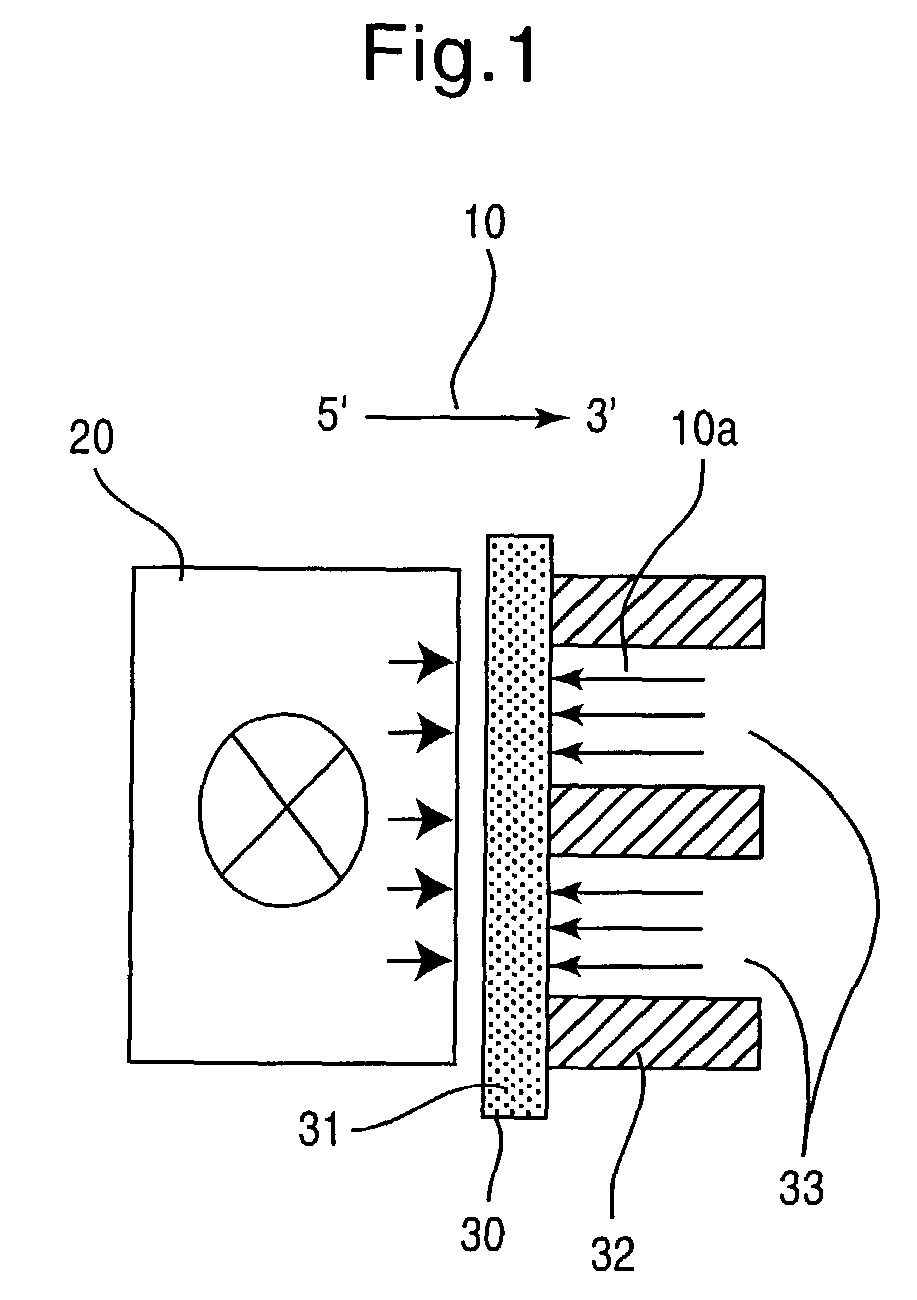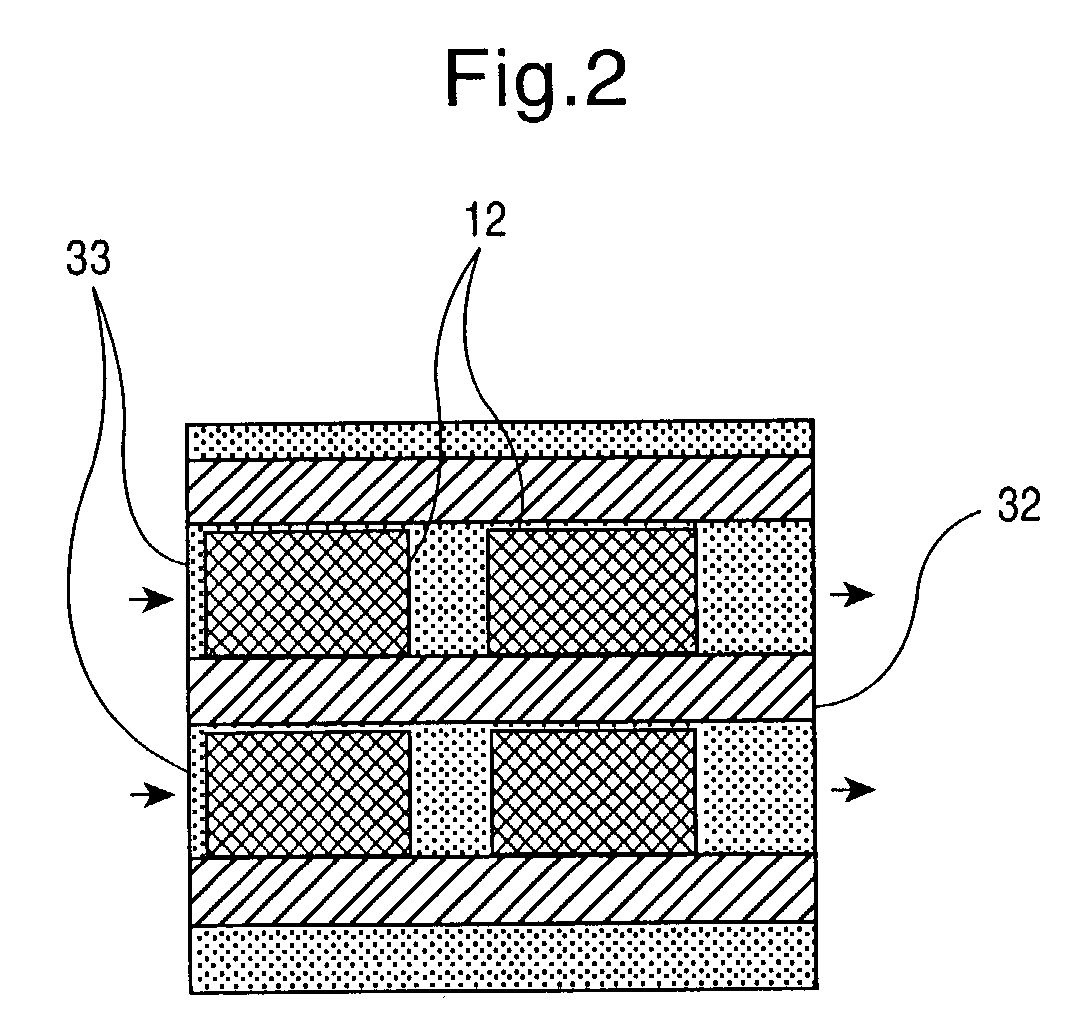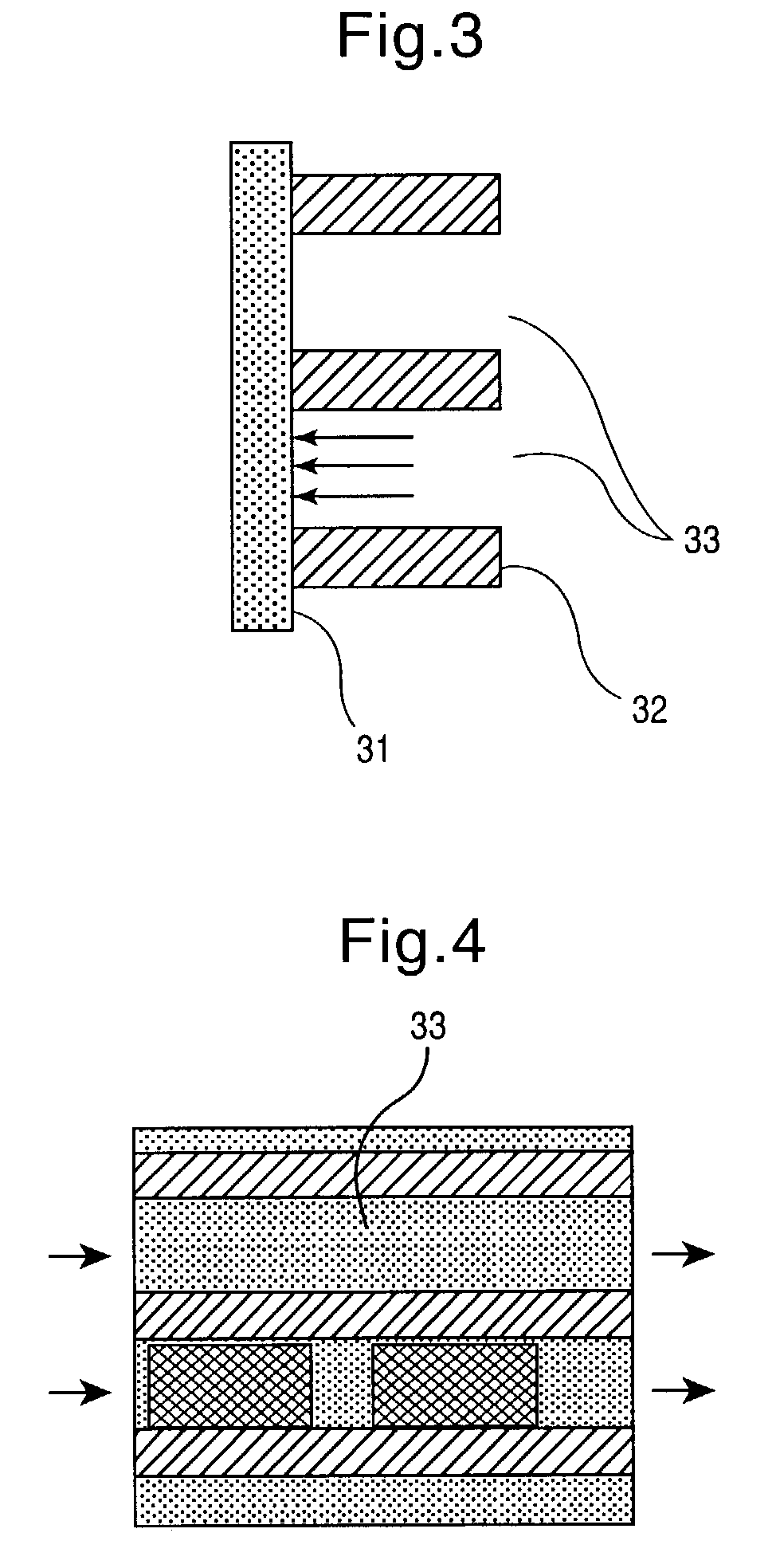Method for producing polymers
a polymer and polymer technology, applied in the field of polymer production methods, can solve the problems of insufficient automation and accelerated speed, insufficient dna which has been cloned in said clone, and time-consuming and laborious corresponding work
- Summary
- Abstract
- Description
- Claims
- Application Information
AI Technical Summary
Problems solved by technology
Method used
Image
Examples
Embodiment Construction
[0034] In a particularly preferred embodiment, the invention relates to a method for producing synthetic DNA of any optional sequence and thus any known or novel functional genetic elements which are contained in said sequence. This method comprises the steps
[0035] (a) provision of a support having a surface area which contains a plurality of individual reaction areas,
[0036] (b) location-resolved synthesis of nucleic acid fragments having in each case different base sequences in several of the individual reaction areas, and
[0037] (c) detachment of the nucleic acid fragments from individual reaction areas.
[0038] The base sequences of the nucleic acid fragments synthesized in individual reaction areas are preferably chosen such that they can assemble to form a nucleic acid double strand hybrid. The nucleic acid fragments can then be detached in step (c) in one or more steps under conditions such that a plurality, i.e. at least some of the detached nucleic acid fragments assemble to fo...
PUM
| Property | Measurement | Unit |
|---|---|---|
| length | aaaaa | aaaaa |
| surface area | aaaaa | aaaaa |
| time | aaaaa | aaaaa |
Abstract
Description
Claims
Application Information
 Login to View More
Login to View More - R&D
- Intellectual Property
- Life Sciences
- Materials
- Tech Scout
- Unparalleled Data Quality
- Higher Quality Content
- 60% Fewer Hallucinations
Browse by: Latest US Patents, China's latest patents, Technical Efficacy Thesaurus, Application Domain, Technology Topic, Popular Technical Reports.
© 2025 PatSnap. All rights reserved.Legal|Privacy policy|Modern Slavery Act Transparency Statement|Sitemap|About US| Contact US: help@patsnap.com



